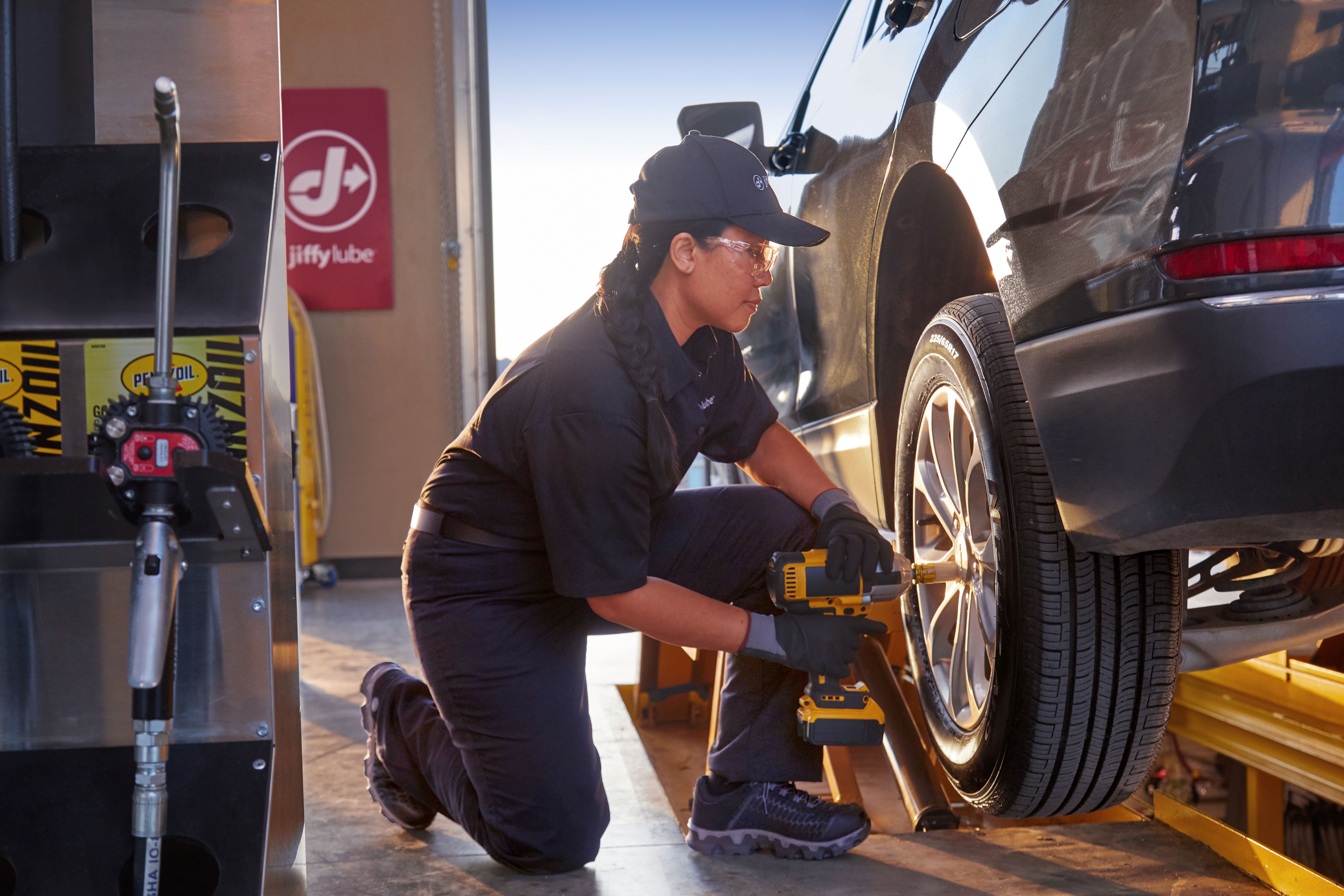Tire Solution: Comprehending Tire Pressure Monitoring Equipments
Comprehending Tire Stress Tracking Systems (TPMS) is an important facet of maintaining optimum automobile performance and safety and security when traveling. With developments in auto technology, TPMS has become a basic attribute in modern-day vehicles, supplying real-time details on tire stress degrees. Delving much deeper right into the complexities of TPMS, one can uncover the different parts that compose this system and the relevance of each in guaranteeing exact surveillance. From straight to indirect TPMS systems, the landscape of tire stress monitoring varies, each with its one-of-a-kind collection of advantages and factors to consider. Keep tuned to decipher the intricacies of TPMS, from upkeep pointers to the undeniable benefits of keeping your tires properly inflated. tires morris il.

Significance of TPMS
The value of Tire Pressure Monitoring Solutions (TPMS) lies in their capacity to improve automobile safety and efficiency through real-time monitoring of tire pressure degrees. Preserving the right tire stress is vital for ensuring optimum handling, braking, and overall safety and security of an automobile. TPMS supplies chauffeurs with prompt comments on any kind of overinflated or underinflated tires, permitting prompt changes to be made.
Components of TPMS
Consisting of different crucial components, a Tire Pressure Surveillance System (TPMS) functions as an innovative safety function in modern cars. The primary elements of a TPMS consist of sensors, a control module, and a caution sign. Sensing units are normally situated in the tire shutoff stem or affixed to the wheel setting up, where they determine tire pressure and transmit information to the control module. The control component processes this details and triggers a warning if it finds dramatically reduced stress in any one of the tires. The warning sign, commonly an icon on the dashboard, alerts the driver to check the afflicted tire or tires. Some progressed TPMS versions also display the real tire stress readings for each tire, providing drivers with real-time details to ensure optimal tire performance and safety and security. By monitoring tire pressure continually, TPMS helps prevent crashes, minimizes tire wear, and enhances gas performance, making it an essential element for car safety and performance.
Kinds Of TPMS

On the various other hand, indirect TPMS counts on the automobile's wheel speed sensors to monitor tire pressure. This system spots underinflation by comparing the rotational rates of the wheels. Indirect TPMS is much less Get More Information pricey than straight TPMS, as it utilizes existing sensors within the automobile.
While direct TPMS offers extra accurate analyses, indirect TPMS is less complex in style and normally requires much less upkeep. Both systems have their benefits and restrictions, and the option in between them often relies on elements such as cost, car make, and personal preference. Comprehending the differences in between these 2 sorts of TPMS can help car proprietors make educated decisions regarding tire upkeep and safety.
TPMS Upkeep Tips
Effective maintenance of TPMS is necessary for making sure optimal efficiency and safety and security of your automobile. Frequently checking the TPMS sensing units for any kind of damages or rust is critical. Guarantee that the sensing units are free and tidy from debris that can interfere with their performance. Furthermore, it is recommended to examine the sensor batteries occasionally and change them as required to guarantee exact readings. Conduct regular checks on the tire pressure degrees and contrast them with the TPMS readings to ensure they correspond. If there are any type of inconsistencies, rectify the system adhering to the maker's standards. In addition, throughout tire turning or substitute, ensure that the TPMS parts are taken care of meticulously to avoid any possible damage. If the TPMS warning light illuminates on the dashboard, address the issue immediately by inspecting the tire pressures and the general system for any kind of faults. By adhering to these upkeep suggestions, you can lengthen the life expectancy of your TPMS and boost the safety and security of your driving experience.
Advantages of Proper Tire Stress
Keeping correct tire stress, as stressed next page in TPMS Upkeep Tips, is critical for enjoying the countless benefits associated with ideal tire stress degrees. In addition, appropriate tire stress makes sure even tire wear, expanding the life expectancy of the tires and promoting safer driving problems. In verdict, the advantages of appropriate tire stress go beyond simply tire long life; they incorporate improved gas efficiency, improved security, much better vehicle efficiency, and overall driving convenience.
Final Thought
Finally, recognizing tire stress tracking systems (TPMS) is important for maintaining optimal tire pressure and making sure car security. By recognizing the significance of TPMS, recognizing with its elements, knowing the different types available, sticking to appropriate upkeep ideas, and understanding the benefits you can try here of keeping correct tire stress, motorists can boost their driving experience and extend the lifespan of their tires. Proper tire pressure is key to risk-free and effective lorry procedure.
